
A TREASURE-TROVE OF LEGENDS
[caption id="RosslynChapel_Feature" align="aligncenter" width="1024"]
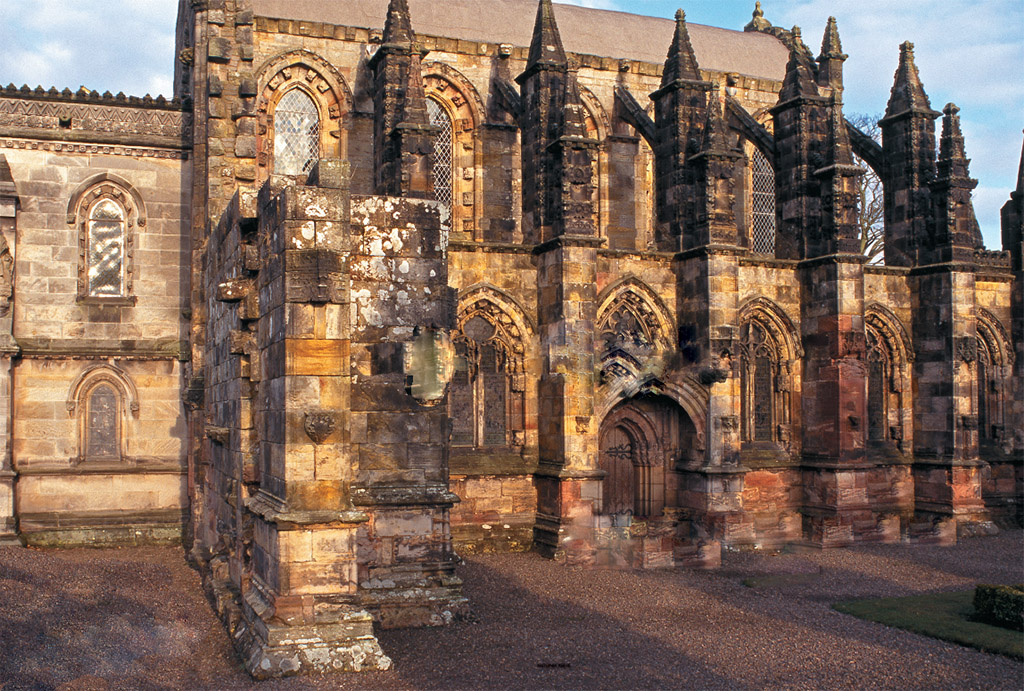
ANTONA REEVE
[caption id="RosslynChapel_img1" align="aligncenter" width="1024"]
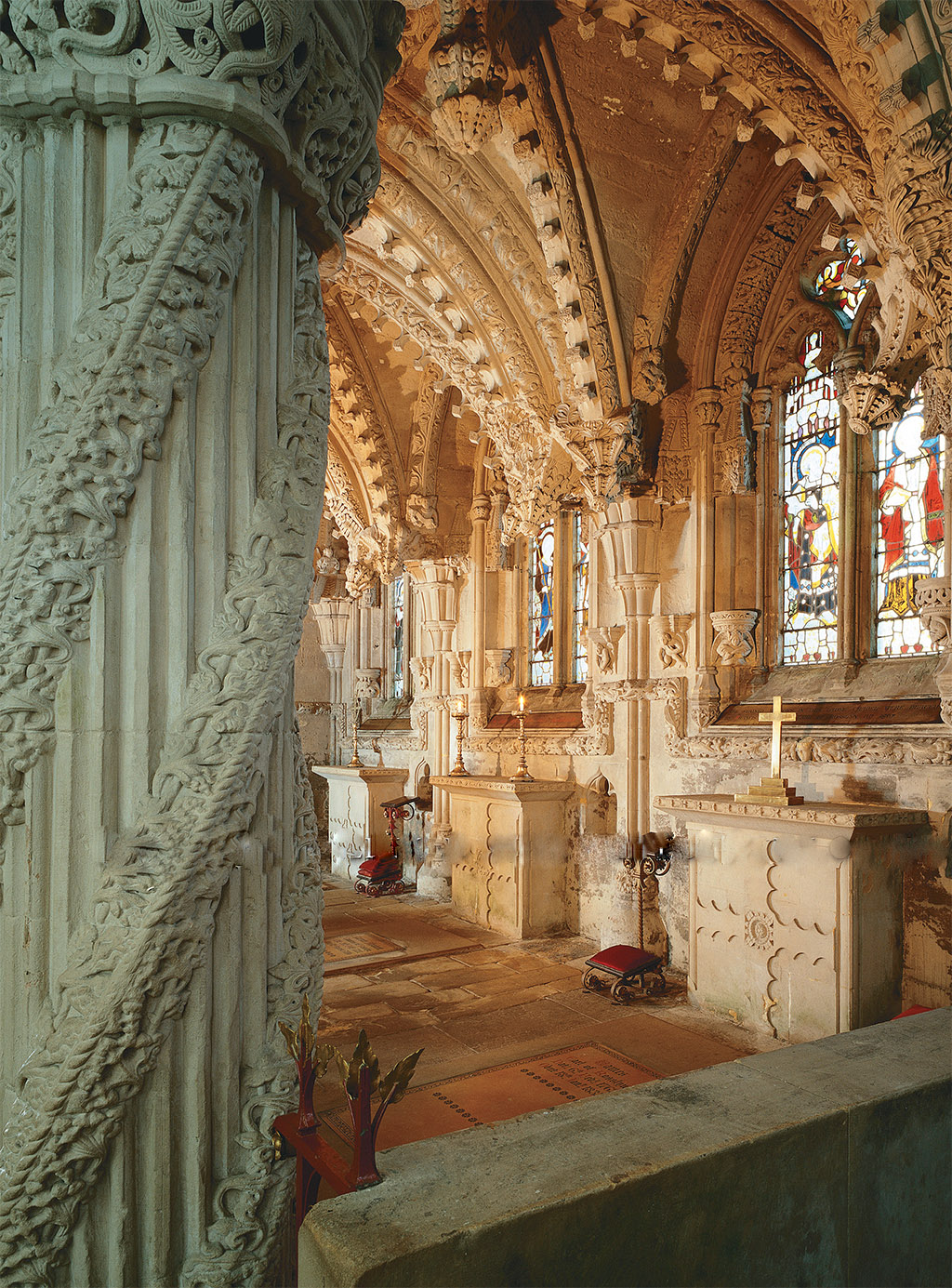
SANDRO VANNINI/CORBIS
[caption id="RosslynChapel_img2" align="aligncenter" width="728"]
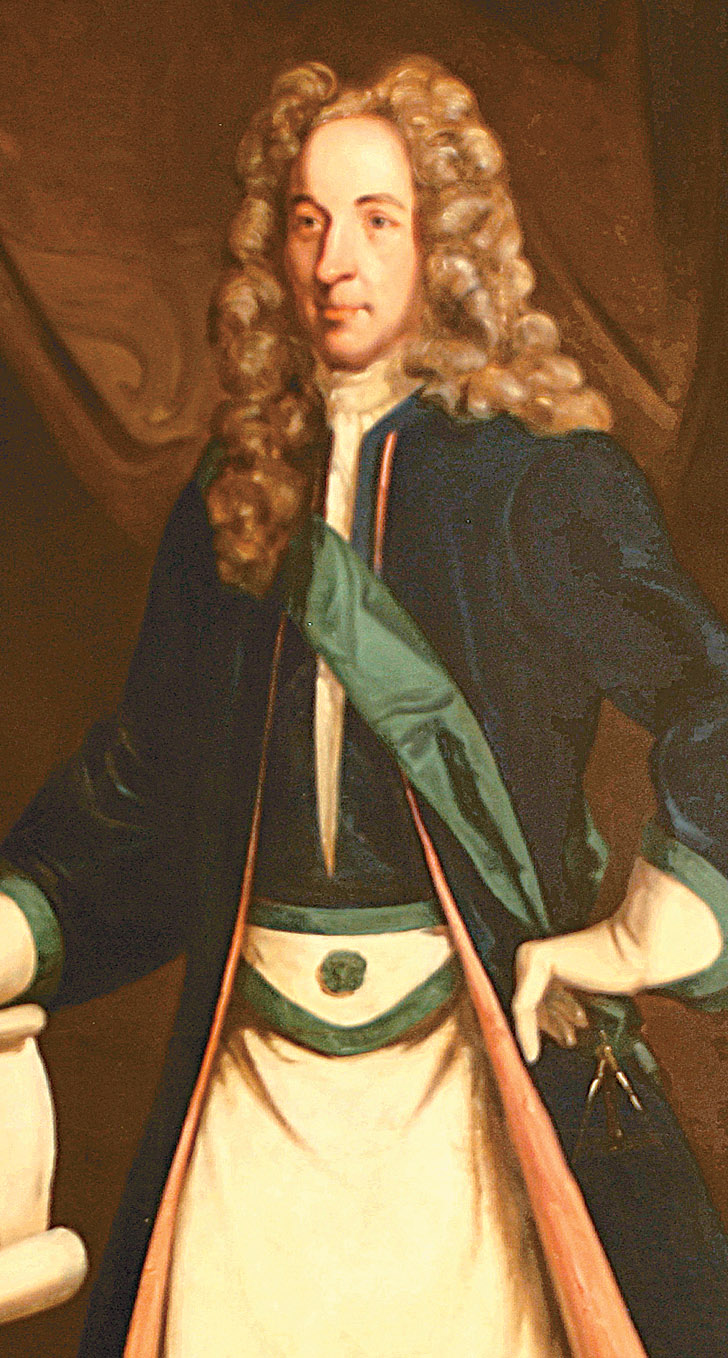
THE GRAND LODGE OF ANTIENT, FREE AND ACCEPTED MASONS OF SCOTLAND
THE CHAPEL IS LINKED WITH THE LOST ARK OF THE COVENANT AND THE HOLY GRAIL.
“I HAD A RECENT E-MAIL FROM MARY Magdalene,” Stuart Beattie told me. I wasn’t terribly surprised. Beattie, after all, is the project director for the Rosslyn Chapel Trust, and the chapel, just south of Edinburgh, has long provided a focus for all sorts of esoteric lore and the occasional eccentrics who pursue it. The chapel also plays a pivotal role in The Da Vinci Code, Dan Brown’s international best-selling novel about Christianity’s secret past. An e-mail from Mary Magdalene? It’s all in a day’s work at Rosslyn Chapel.
Beattie also told me about a dowser who informed him that 46 documents were hidden beneath one of the chapel’s pillars. “How he can determine there are actually 46 intrigues me,” said Beattie, a pleasant and low-key man with a dry sense of humor about the rumors that swirl around Rosslyn. “But you can’t get too uptight about these things. You just enjoy them and accept them as part of Rosslyn’s baggage. Rosslyn brings out a lot of emotions.”
Indeed it does. Rosslyn Chapel has been linked to everything from the Knights Templar to the lost ark of the covenant and the Holy Grail. I approached its legends with some skepticism. I was even more dubious after reading Rosslyn: Guardian of the Secrets of the Holy Grail, by Tim Wallace-Murphy and Marilyn Hopkins. My baloney detector went off by page 14, when the authors posed a million-dollar question: Had the chapel’s founder, Sir William St. Clair, “gained the spiritual ability to look backwards and forwards through time and foresee the dramatic change in human consciousness, when human thinking would gain a new objective: to gain mastery over nature itself”? I did want to heed the book’s warning against “contempt prior to investigation.” But, really now.
[caption id="RosslynChapel_img3" align="aligncenter" width="1024"]
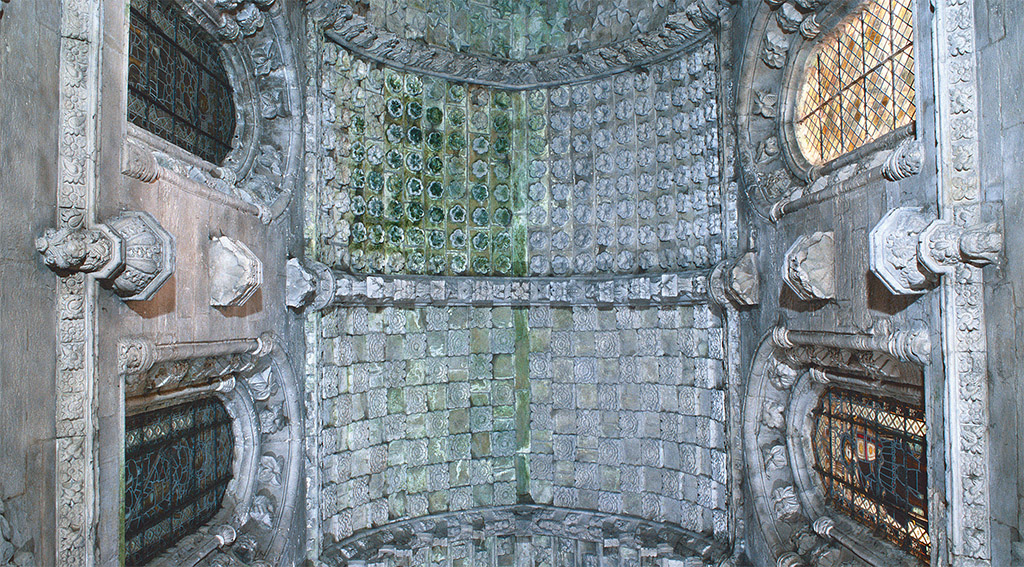
SANDRO VANNINI/CORBIS
So what exactly do we know about Rosslyn Chapel? The chapel is in the town of Roslin, about seven miles south of Edinburgh. It was founded in 1446 by Sir William St. Clair, the third and final St. Clair Prince of Orkney. The St. Clairs (later Sinclairs) had a long history in Scotland, with roots in the Orkney Islands and Norway. One William St. Clair fought at the Battle of Hastings alongside his cousin, William the Conqueror, and later gained the barony of Rosslyn from King Malcolm Canmore of Scotland. Another William St. Clair was one of the lords assigned to bring Robert the Bruce’s heart to the Holy Land, but he was killed in Spain en route.
The William St. Clair who built Rosslyn Chapel had grandiose plans. He intended to create the Collegiate Chapel of St. Matthew, the centerpiece of an educational institution. He founded the town of Rosslyn to house his workers, hired master masons at a salary of £40 a year and oversaw the creation of a beautiful gothic building with a profusion of carvings. Work on the chapel continued for nearly 40 years.
[caption id="RosslynChapel_img4" align="aligncenter" width="675"]

[caption id="RosslynChapel_img5" align="aligncenter" width="678"]
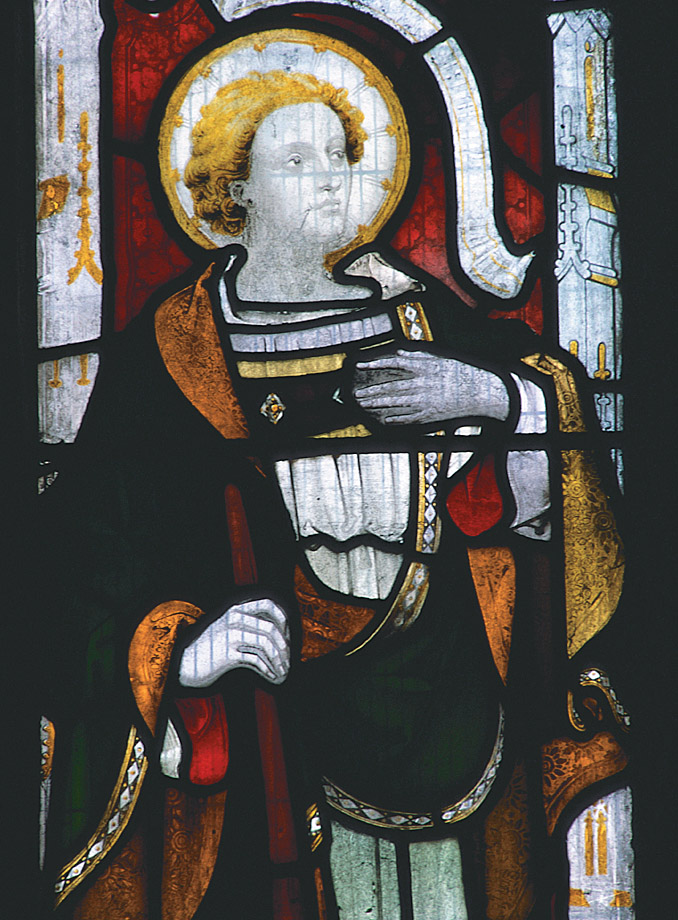
SANDRO VANNINI/CORBIS
But in 1484 Sir William died. When he was interred at Rosslyn his ambitious plans were buried with him. More than five centuries later the chapel remains unfinished. Even so, the building contains a breathtaking repository of stonework, from the rows of objects on the beautiful arched roof of the choir, to the odd and sometimes mysterious figures that populate the building. Stone angels play instruments, more than a hundred pagan Green Men peer from the walls and the seven deadly sins dance across an arch. Devils, dragons, animals, knights, ladies and, of course, Jesus and other religious imagery make their appearances in stone. One carving is supposed to represent the death mask of Robert the Bruce.
‘EVERY IMAGE AND EVERY CARVING AND EVERY REASON TO BRING YOU HERE IS DIFFERENT TO SOMEONE ELSE. IT’S AN ENIGMA, AND THAT’S WHAT MAKES IT SO EXCITING.’
The chapel’s most famous work is the elaborate column called the Apprentice Pillar. According to legend, the master mason’s apprentice carved the pillar while his master was away on a long journey. When the master returned and saw the fine work, he killed the apprentice in a fit of jealous rage. A true story? No one knows, but carved faces elsewhere in the chapel are supposed to represent the enraged master, the murdered apprentice and the apprentice’s grieving mother. It’s worth noting that the so-called Master’s Pillar, although beautiful, is no match for the Apprentice Pillar.
Unfinished though it may be, Rosslyn Chapel has inspired many artists and writers. In his poem “Rosabelle,” Sir Walter Scott wrote about the legend that the chapel appeared to be ablaze whenever a St. Clair died:
Seem’d all on fire that chapel proud,
Where Roslin’s chiefs uncoffin’d lie,
Each Baron, for a sable shroud,
Sheathed in his iron panoply….Blazed battlement and pinnet high,
Blazed every rose-carved buttress fair—
So still they blaze, when fate is nigh
The lordly line of high Saint Clair.
Other visitors have included painters J.M.W. Turner and Alexander Nasmyth; and writers Robert Burns, Samuel Johnson, James Boswell, and William and Dorothy Wordsworth. The latter recorded her impressions of the chapel, writing in 1803, “The stone both of the roof and walls is sculptured with leaves and flowers, / so delicately wrought that I could have admired them for hours.” Her brother William, for his part, wrote a sonnet in 1831 titled “Composed in Rosslyn Chapel During a Storm.”
The chapel that so impressed Wordsworth in 1831 had been severely buffeted by the winds of religious change over the previous centuries. As a Catholic institution it faced destruction during the Scottish Reformation; its altars were demolished in 1592. Oliver Cromwell had his men stable their horses in the chapel in 1650 when he and General George Monck conquered nearby Rosslyn Castle. In 1688 a mob from Edinburgh attacked this symbol of papistry and inflicted more damage. Minor repairs were made in 1736, but the chapel was not rededicated until 1862. During World War II an overzealous local official recommended closing the chapel as an austerity measure. In response, the minister of fuel wrote back, “I doubt whether I would be justified in securing a small economy of fuel in this world at the possible cost of a disproportionate expenditure of it on myself in the next.” So the chapel survived even a bureaucratic assault.
[caption id="RosslynChapel_img6" align="aligncenter" width="1024"]
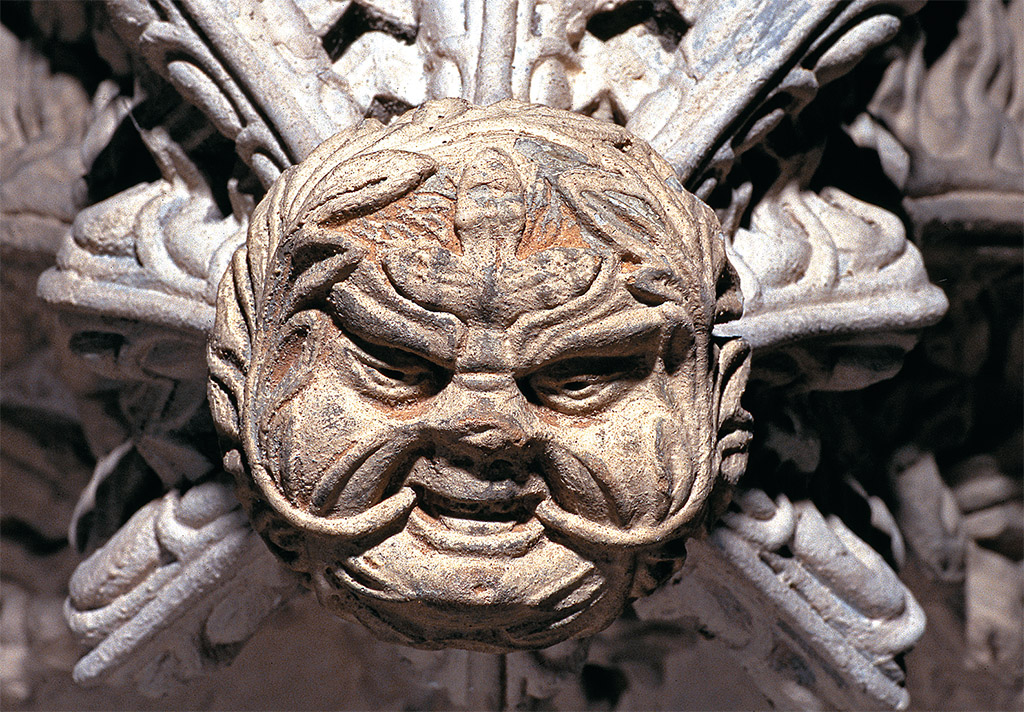
ANTONIA REEVE
Today Rosslyn Chapel is an ever-more-popular tourist attraction, helped in part by the many legends that surround it. “The whole joy of Rosslyn is that it has almost as many stories as you care to think of,” Beattie told me. “Every image and every carving and every reason to bring you here is different to someone else. It’s an enigma, and that’s what makes it so exciting.”
Like the heroes of The Da Vinci Code, I discovered that there is definitely a coverup going on at Rosslyn—but a non-mystical one. It began in 1997, when workers erected a huge metal canopy over the entire building. The stones had absorbed water over the centuries, explained Beattie, who compared the building to a sponge that needed to be wrung out. The initial fear was that rainwater was causing damage, particularly since rain contains ever-increasing amounts of acid that eats away at the stone. “What we’ve subsequently found is that the water in the stonework is more the result of condensation than it is ingress, and so it’s a different sort of water to deal with and, in many ways, less scary,” Beattie said. “So the situation we find ourselves in at the moment is that the chapel is drying markedly. [But] if you then take the canopy away and expose the stone that has been dry for six or seven years to the elements again, you have a continuing problem.” The canopy could be up until 2007, although Beattie expects it to come down sooner. In the meantime, although the structure does detract from the chapel’s aesthetic impact, it also allows visitors to climb up and see the gothic superstructure.
After talking with Beattie, I set out to explore the building. Although only about 40 feet wide and 70 feet long, not including the baptistery, the chapel is wonderfully atmospheric—cool and dim and hushed. It’s not a place to rush through. There are stories about all the various carvings, and my guidebook, written by the current earl of Rosslyn, pointed out many details that would otherwise have escaped me. For example, I learned about a mistake some long-for-gotten stone worker made when he carved the seven virtues and the seven deadly sins—he placed avarice among the virtues and charity among the sins. “The most likely explanation,” the book stated, “is that when the stones of the architrave were carved in the workshop, the two scenes were carved on the wrong sides of their common stone.” The stone could fit only one way, so the mason had to make do.
[caption id="RosslynChapel_img7" align="aligncenter" width="1024"]
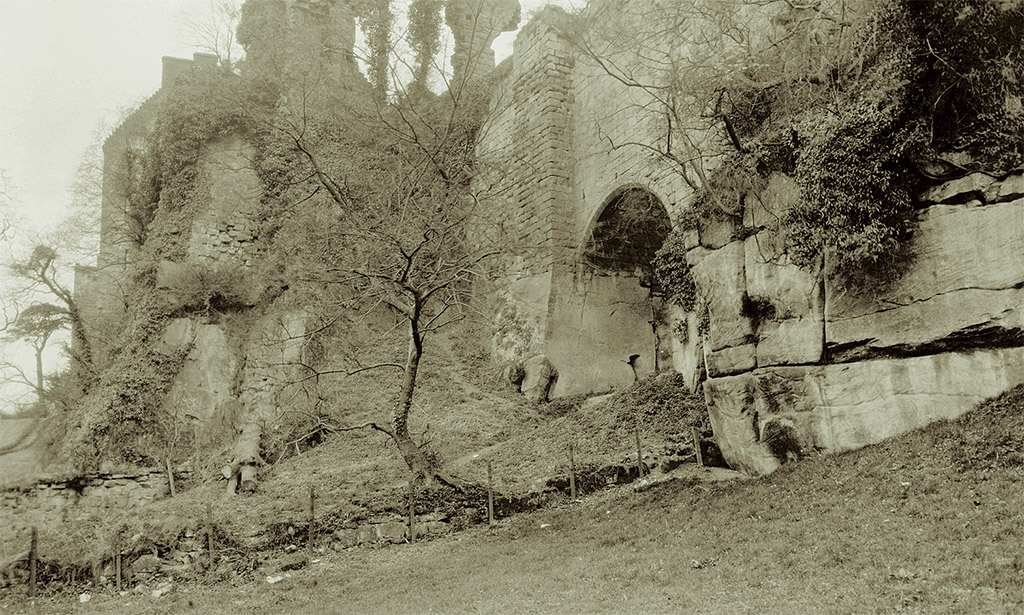
BETTMANN/CORBIS
Rosslyn is still a working chapel, and at noon I listened to a reading of some of the prayers visitors have written in a book kept there. The simple ceremony was quite moving. I experienced another haunting interlude when a tour guide sang some kind of hymn or chant in the sacristy—a bare, arched, chilly space below ground level. As his voice echoed around the sacristy and up into the chapel, the effect was truly spine-tingling.
Another time I watched two older men stand at opposite ends of a memorial to a former countess of Rosslyn. They closed their eyes, raised their arms toward each other, then slowly lowered their arms. They laughed as they left the chapel, and I didn’t know if they had been in earnest or not. Maybe I had witnessed some strange ritual of the Knights Templar.
The Templars—officially the Poor Knights of Christ and the Temple of Solomon—were founded around 1120 to protect Christian pilgrims to the Holy Land. In Jerusalem the order made its headquarters atop Temple Mount, where Herod the Great had erected his temple on the site where Solomon built his earlier one to house the ark of the covenant. There, according to the legends, the Templars found a number of wonderful relics. “Supposedly Herod’s Temple held secrets of the time of Christ,” Beattie explained, “and may have had—and that’s the word that runs all the way through Rosslyn’s history: ‘may, perhaps, possibly’—the ark of the covenant, bits of the true cross, maybe the mummified head of Christ, Holy Grail. You go for it; if they were there, they should have been in that building.”
Muslim opponents finally forced the Templars out of the Holy Land in 1291, and some speculate that the Knights took their sacred relics with them. They did become a very rich and powerful order, so much so that Pope Clement V and King Philip IV of France combined to crush them in 1307. Some Templars fled to Scotland. William St. Clair was allegedly a Templar Grandmaster, so it’s possible he gained possession of relics from Solomon’s Temple and hid them away in a secret vault somewhere on the chapel grounds. Earlier last year a Scottish group of Knights Templar began advocating for noninvasive searches to find evidence of such vaults. Beattie assured me there were no plans to attempt anything of that sort. Besides, he asked with tongue slightly in cheek, what if they did find holy relics? How could they handle the crowds? “Our car park’s not big enough.”
Others see links to Freemasonry in the carvings—some of the stone angels appear to be making hand gestures with Masonic meaning. Yet Freemasonry did not reach Scotland until sometime around the mid-18th century. Beattie suggested that the Masonic carvings could have been introduced around that time. “Or not. Equally, you could perhaps suggest that maybe Freemasonry and the Templars have some sort of generic link. I don’t think either would be particularly happy with that.” Wherever the eye passes in Rosslyn Chapel it lights upon a carving or pillar, boss or symbolic image with a story behind it. The whole is a visual crossword puzzle for which there is no key.
On an arch around a window on the chapel’s south side I spotted other intriguing carvings—rows of what certainly looked like corn, a vegetable that was unknown in Europe until after Christopher Columbus’ return from the New World. But work had ended here before Columbus crossed the Atlantic. Could these carvings mean that someone with links to Rosslyn reached the New World before Columbus did? Indeed they do, according to some theories. In 1398 Henry St. Clair, the 42nd Earl of Orkney and grandfather of the chapel’s founder, may have explored Newfoundland and Nova Scotia, traveled as far south as Massachusetts and wintered in North America. The story comes from the socalled Zeno Manuscript, an account of the voyage written by a Venetian whose great-great-great grandfather had supposedly traveled with St. Clair. And mean-while, in Westford, Mass., there’s a rock with markings that some interpret as the depiction of a 14th-century knight—a memorial to one of Henry’s men, they say, who died there.
Not everything in the chapel is so old. The baptistery, at the west end, dates from 1880-81, and its stained glass windows are even newer. One shows a World War II airman. It’s a memorial to the Honorable Peter St. Clair Erskine, who died in 1939, and to Wing Cmdr. Sir John Millbanke, Erskine’s stepfather, who died of his war wounds in 1947. The window, dating from 1950, makes one wonder what the carvers from the 15th century, obsessed as they were with winged beings, would have thought of the idea of men in flying machines. The other window depicts St. Francis of Assisi and was completed in 1970. It is in memory of the earl of Rosslyn’s grandmother, who was from Australia—which would explain the kangaroo.
After spending a couple of hours inside the chapel, I struck out down a trail to find Rosslyn Castle. It was a pleasant September afternoon, and I had the overgrown trail to myself. After scrambling over a wall, I spied the top of battlements above the trees. I then followed a gravel road, which curved over a stone bridge that offered dizzying views down to the ground. The castle’s ruined walls stood at the end of the bridge.
Even in ruins the castle commanded respect. Construction started in 1304 on this bluff high above the River Esk. When Cromwell and Monck attacked the castle in 1650, the fact that Cromwell did not destroy it is yet another Rosslyn mystery. Catholic chapels were natural targets for Cromwell and his Roundheads—so why is it that they left Rosslyn relatively unscathed?
“Was he a Freemason, was he a Knight Templar?” asked Beattie. “On the other hand, very probably I think, Oliver Cromwell was a cultured gentleman. He came in and maybe he appreciated what he saw and said, ‘OK, I don’t agree with it, but it’s too nice to destroy. So let’s leave it.’”
When I left Rosslyn I remained skeptical about the mysteries and legends that hang about the building, but I was glad to have seen it. If the stories are true, Rosslyn Chapel is a fitting place for their secrets. If they’re not, the chapel’s beautiful carvings and rich, documented history still make it unique. The legends merely provide an added attraction, a tantalizing glimpse of what might be. “It’s the baggage that has grown up around Rosslyn,” said Stuart Beattie, “and therefore whether or not it’s 100 percent true doesn’t, perhaps, entirely matter.”





Comments